China, for many, conjures images of bustling cities and ancient history. But for a cyclist, China reveals itself as something more: a vibrant and essential part of the World Of Bikes. My first visit in the mid-1980s immediately cemented this impression. Cars were scarce then, roads were dominated by buses, trucks, and a smattering of official vehicles. But bikes? Bikes were everywhere, a constant flow in dedicated lanes that often dwarfed those for cars. It felt like the entire country was on two wheels. As a passionate cyclist myself, this was a captivating sight. Rush hour was a unique experience – a sea of cyclists, shoulder to shoulder, wheel to wheel, moving as one.
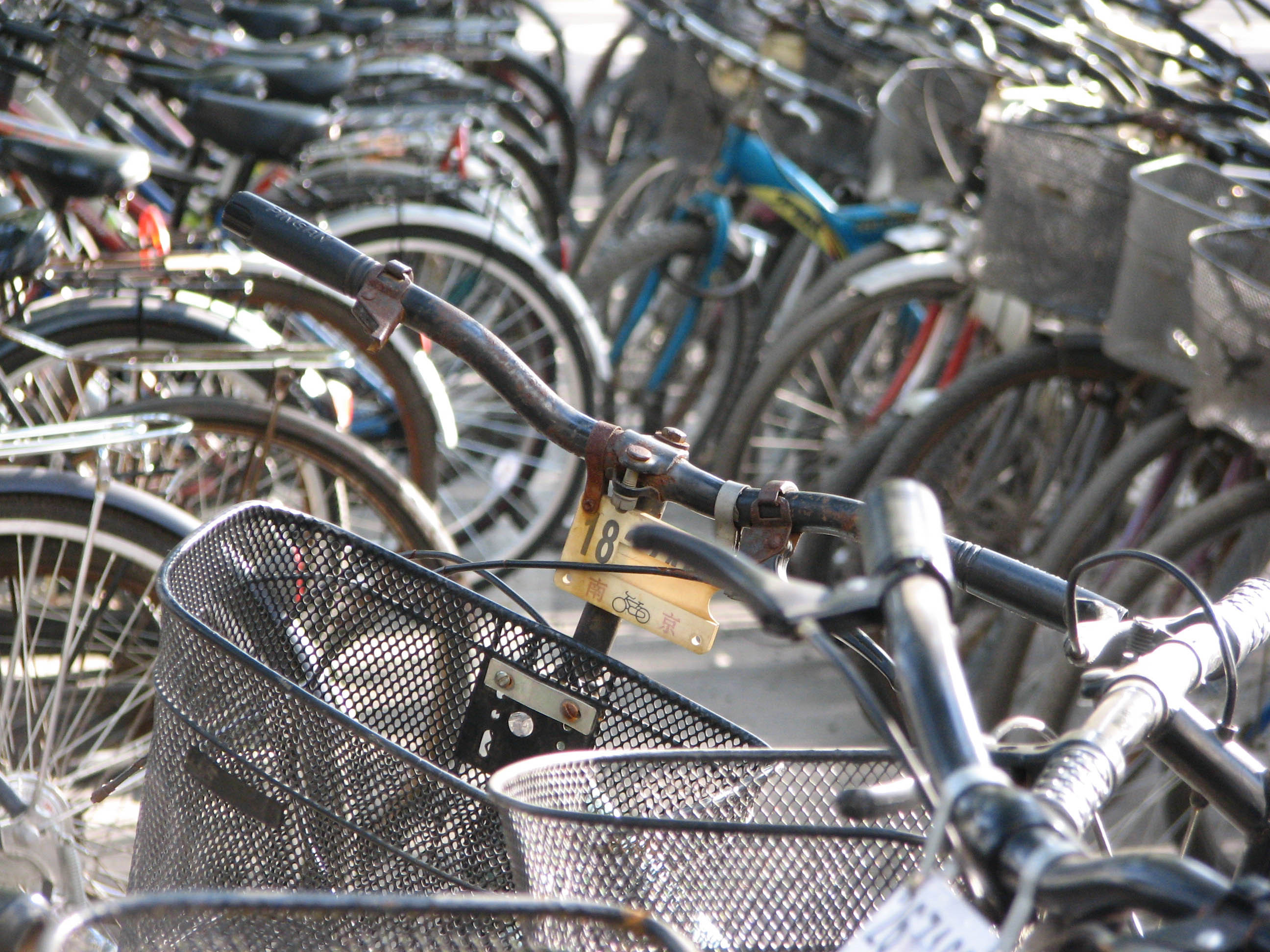
While the landscape of Chinese roads has evolved, the world of bikes remains a significant aspect of daily life. Today, private cars are increasingly common, and scooters and electric bikes have joined the traffic mix. Yet, bicycles haven’t disappeared. Bike lanes, though sometimes narrower than before, are still a prominent feature in urban planning, a stark contrast to many cities in the US. For many Chinese citizens, cycling remains a practical and affordable mode of transportation. In fact, in heavily congested urban centers, navigating by bike can often be quicker than driving, proving its enduring relevance in the modern Chinese transportation ecosystem.
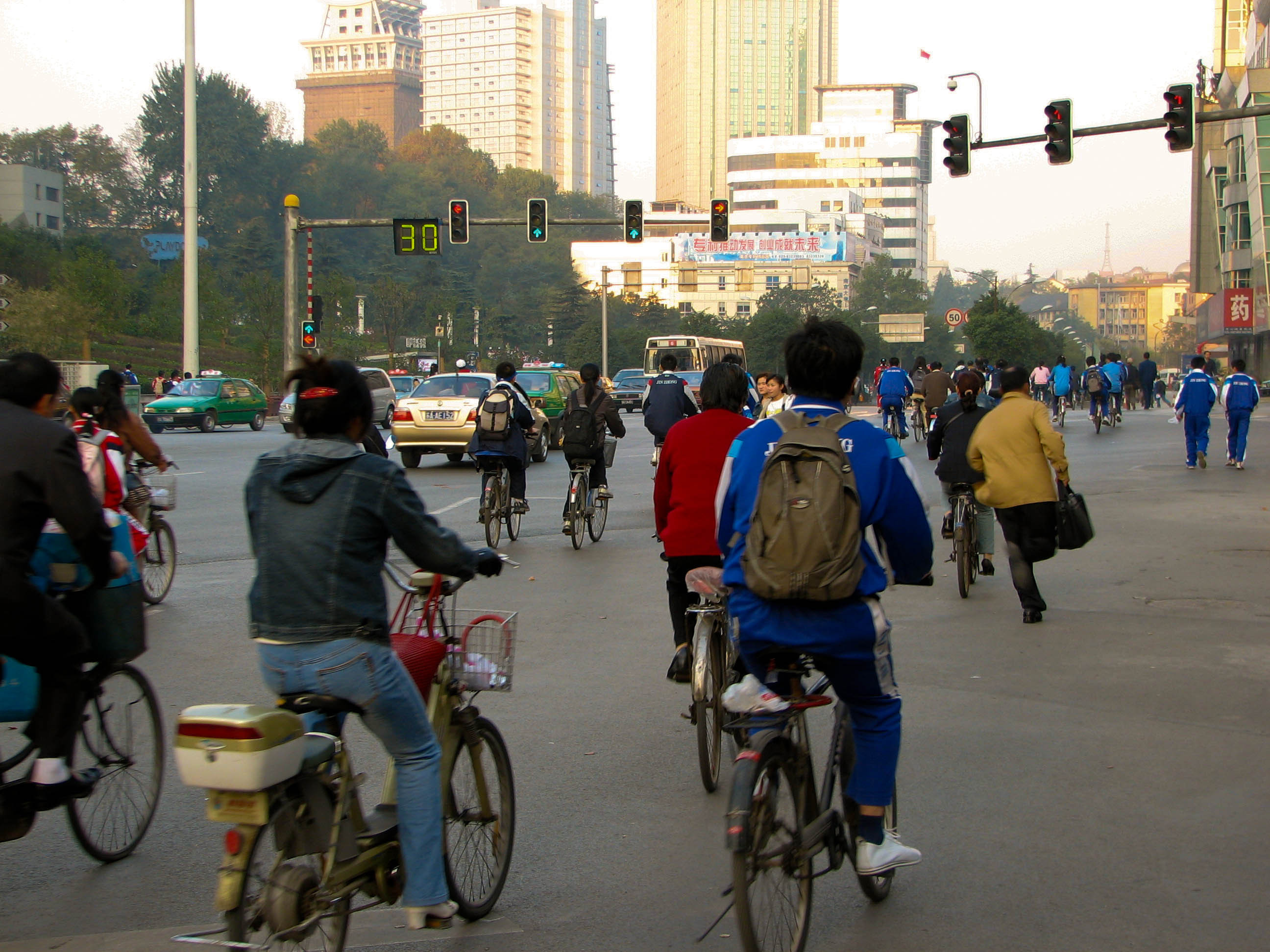
Cycling in China: A common sight of numerous bikes on designated lanes alongside car traffic.
On every extended trip to China, buying a bicycle is a must for me. The sense of freedom it provides, zipping through the city at my own pace, is unparalleled. For anyone reasonably fit, cycling across a major city is entirely achievable and a fantastic way to experience it. In Nanjing, a city of approximately 8 million, my regular route stretched from the Gulou area, near Nanjing University, to the southern markets – a 45-minute ride each way. This love for cycling isn’t new; I’ve been a year-round bike commuter for over 27 years, so integrating into the Chinese world of bikes feels natural.
One of the most striking features of the world of bikes in China is the infrastructure supporting it. Major shopping districts boast massive bicycle parking lots. For a small fee, attendants provide a secure space for your bike, issuing a ticket for retrieval. These parking areas, along with rows of bikes lining almost every commercial street, highlight the sheer volume of cyclists and the organized system in place to accommodate them.
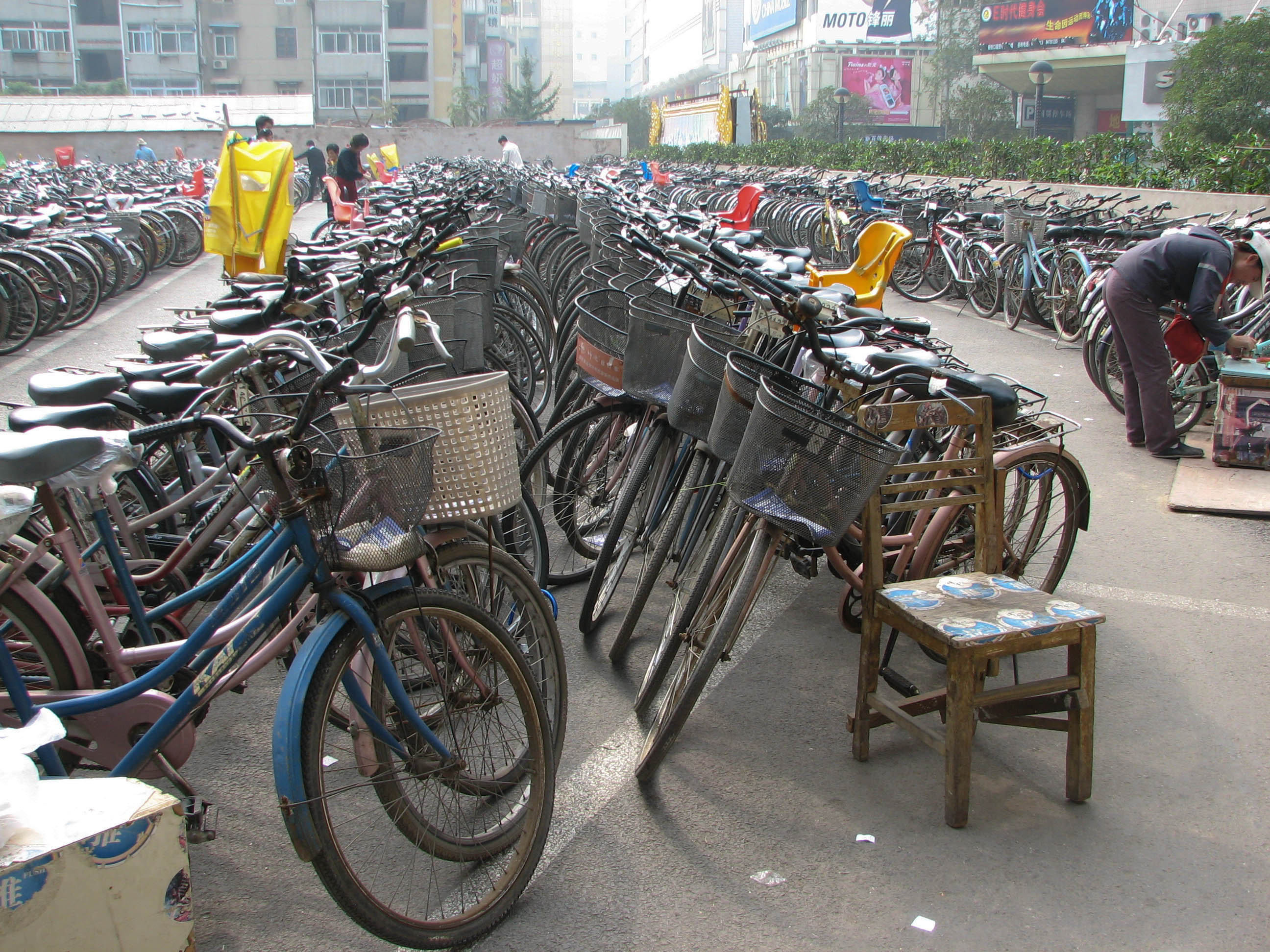
Large bicycle parking area in China: A dedicated space showcasing the scale of bike usage for daily commuting and shopping.
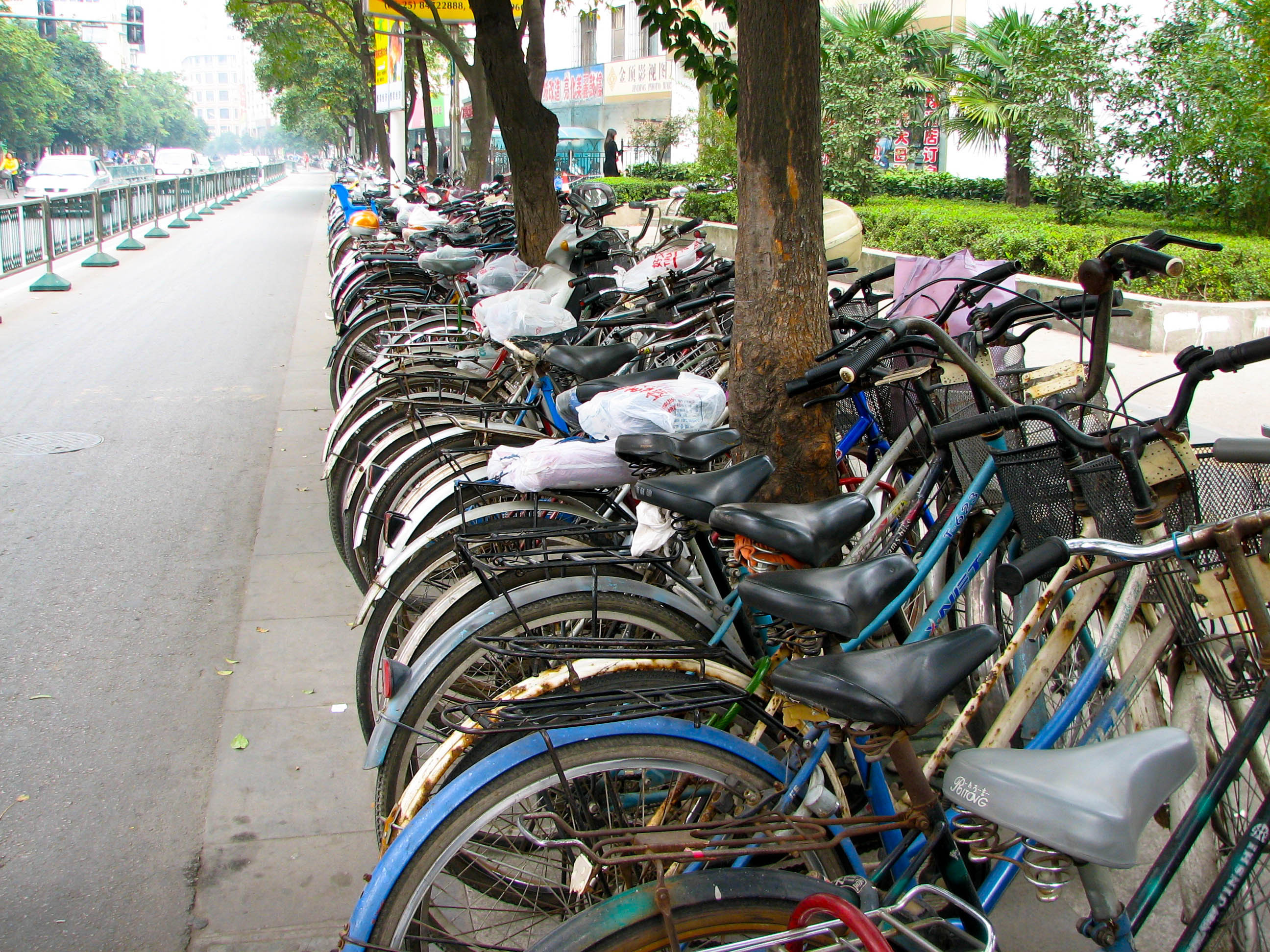
Typical bike parking in urban China: Bikes neatly parked along a sidewalk, demonstrating accessibility and prevalence.
Compared to the US, bicycles in China, especially domestic brands, are remarkably affordable. Popular names like Flying Pigeon (飞鸽 fēigē), Battle (邦德富士达 bāngdéfùshìdá), Yongjiu (永久 yǒngjiǔ), Fenghuang (凤凰 fènghuáng), and Giant (捷安特 jié āntè, originally from Taiwan) dominate the market. While international brands might be found in larger cities, they come with a significantly higher price tag. However, owning a brand new, gleaming bike can present a different kind of problem: theft. Bike theft is a reality, making used bikes a viable alternative. While used bike markets exist, navigating them can be tricky for foreigners as inflated prices are common. Fortunately, bike repair services are readily available and incredibly cheap. Bicycle repair stands are ubiquitous, and fixing a bike is surprisingly inexpensive. I once severely damaged a back wheel, rendering it un-turnable with broken spokes. A local repair stand had it fixed within two hours for the equivalent of just $4.50 USD, a testament to the accessibility and affordability of bike maintenance in the Chinese world of bikes.
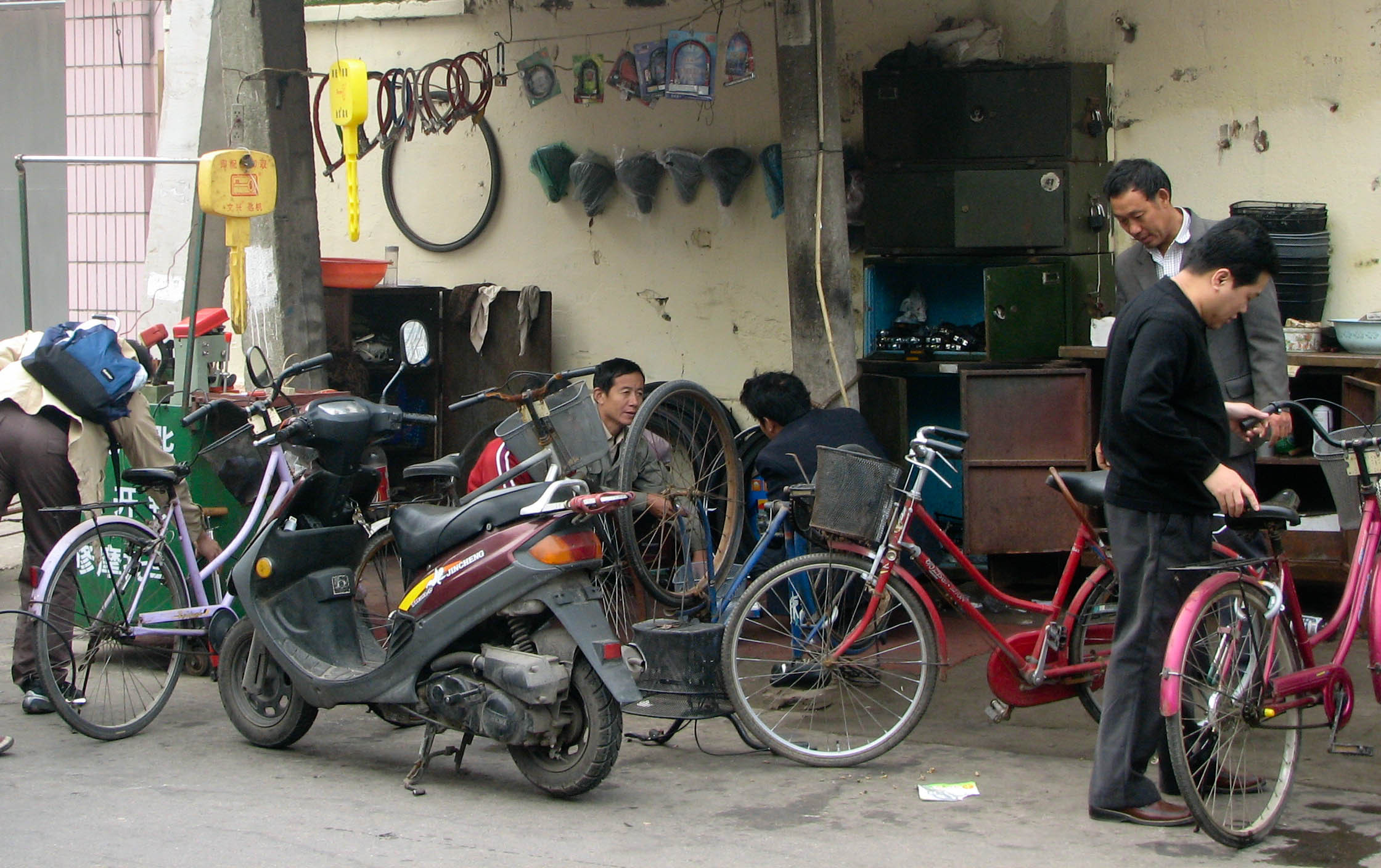
Street-side bicycle repair in China: A repairman fixing a bike, highlighting the accessibility and affordability of maintenance.
Beyond personal transport, the world of bikes in China extends significantly into commerce and logistics. Cargo bikes, a relative novelty in the US, are a common sight in China. Often built as sturdy trikes, these cargo bikes are used to transport an astonishing variety of goods. From refrigerators and beds to water bottles, live animals, and recyclables, the carrying capacity of these bikes is truly impressive. I’ve personally witnessed bikes loaded with seemingly impossible cargo, including one carrying seven five-gallon water bottles!
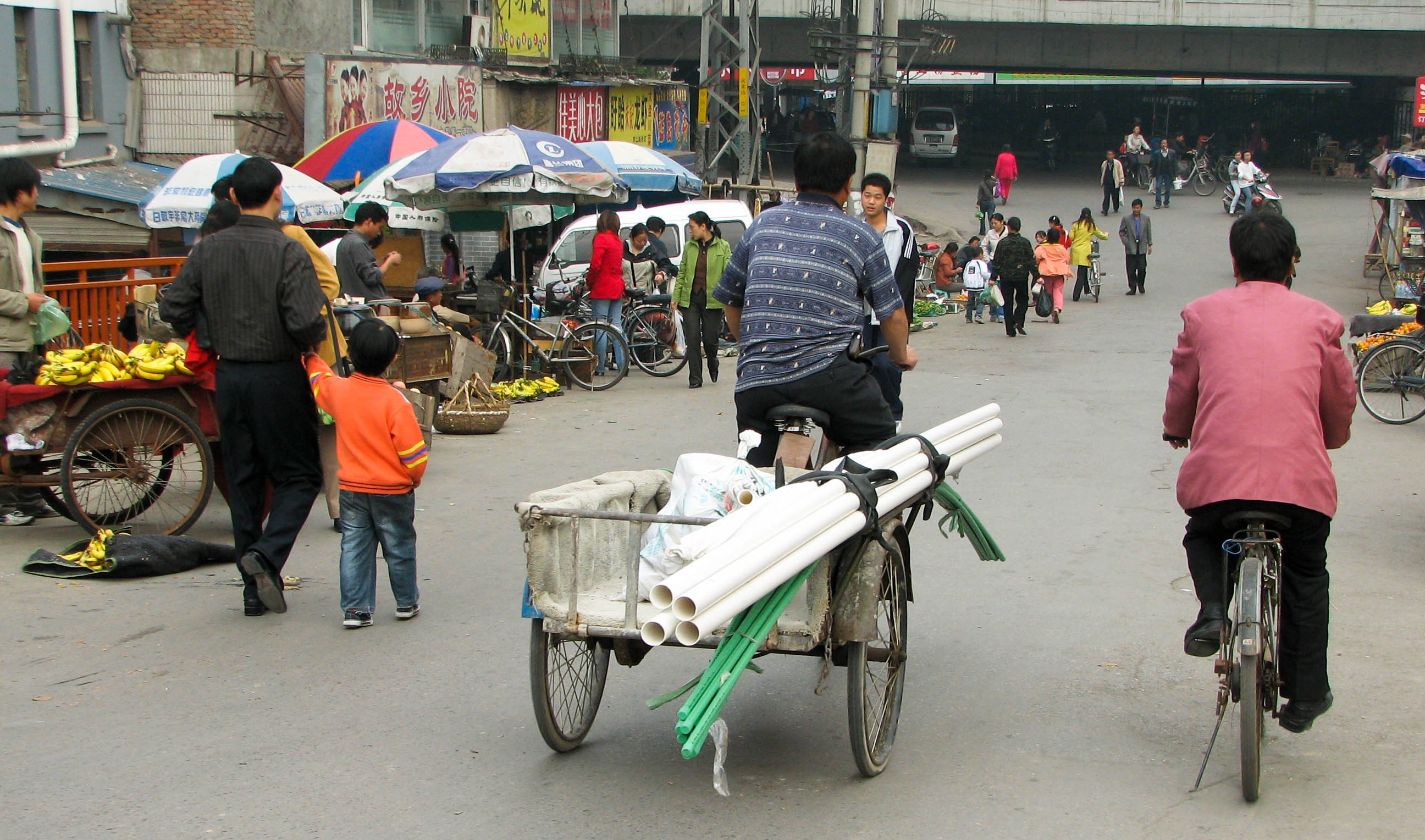
Chinese cargo bike transporting goods: A cyclist moving a substantial load, showcasing the utility of bikes in daily commerce.
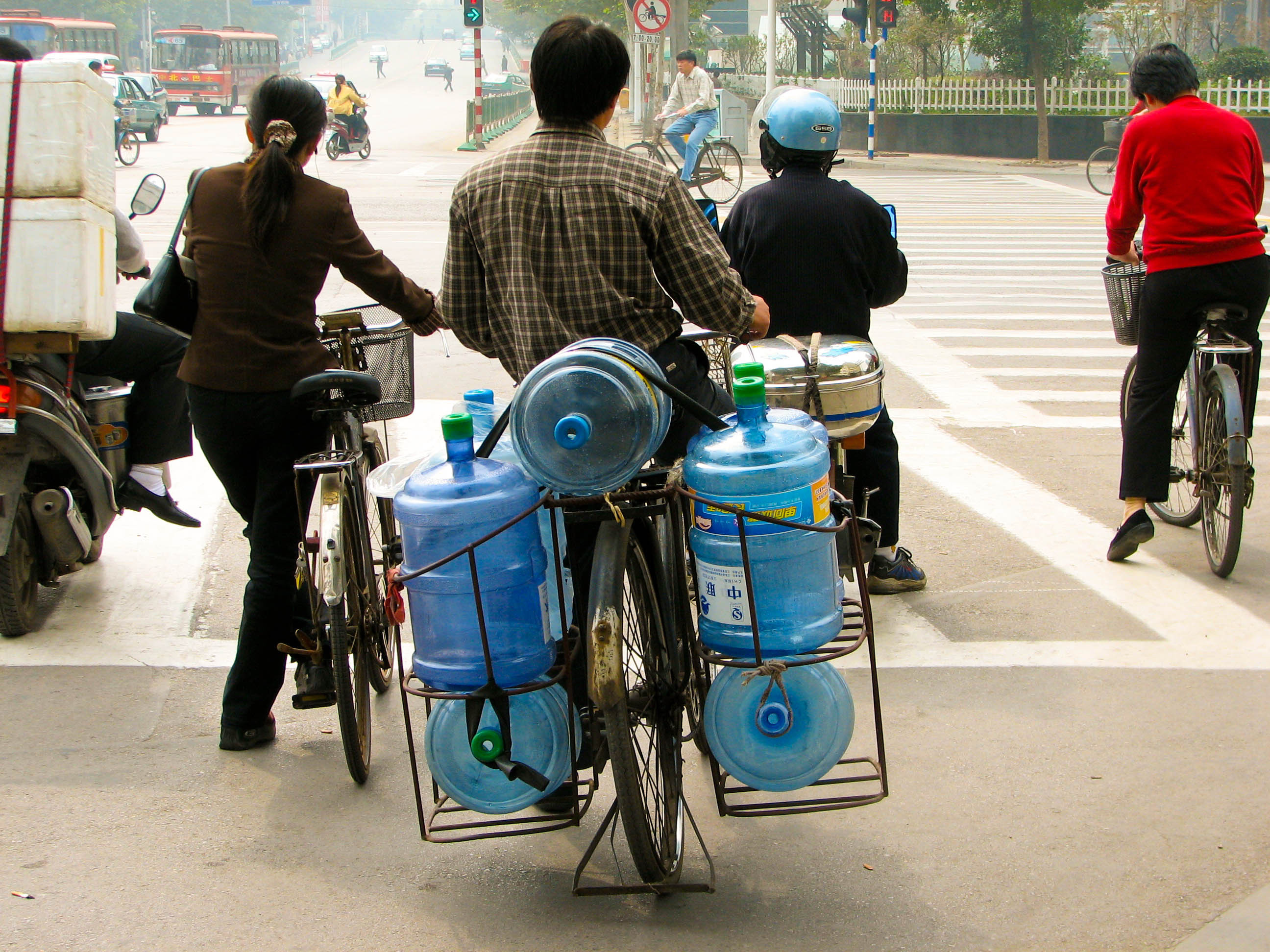
Cargo bike loaded with water bottles: Demonstrating the heavy-duty use of bikes for transporting essential commodities.
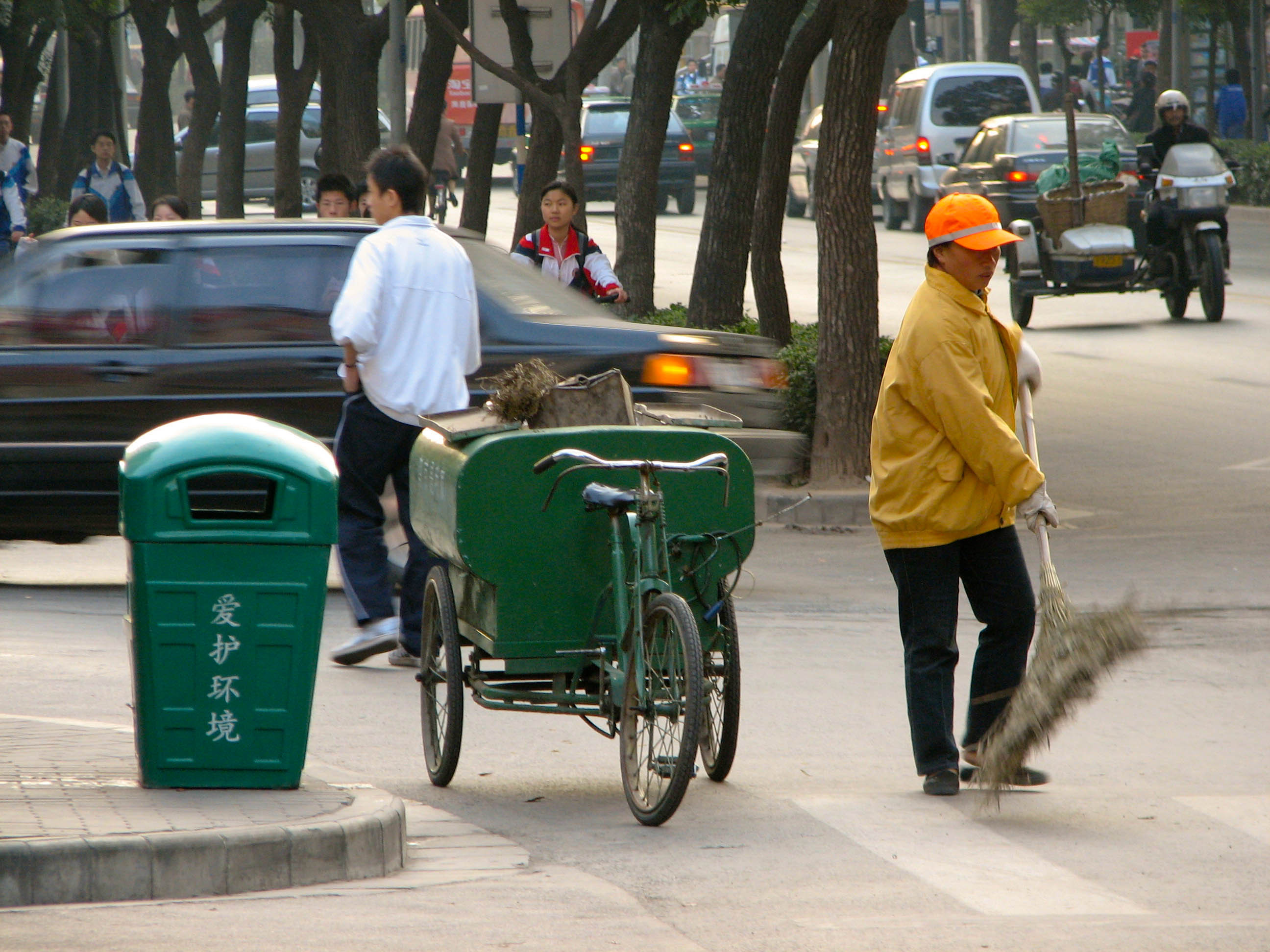
Trash collector using a bike: A waste management worker utilizing a tricycle to collect refuse, showcasing diverse applications of bikes.
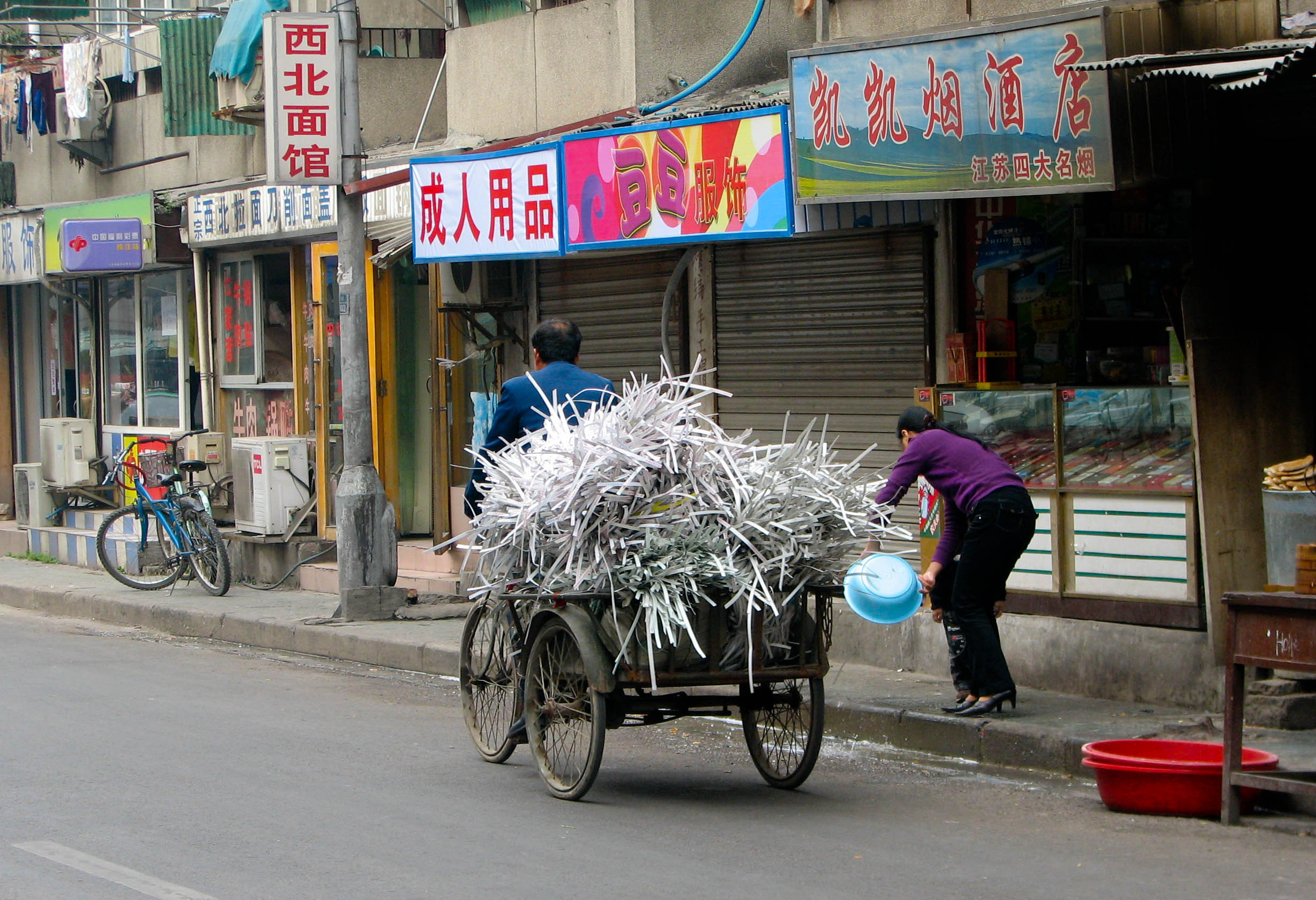
Recycling collection by bike: An individual using a bike to gather recyclable materials, highlighting the role of bikes in environmental efforts.
Street vendors also heavily rely on bikes, using them to transport goods and as mobile stalls. From fruit to prepared food, bikes become integral to small businesses, further embedding them into the fabric of urban life and the world of bikes in China.
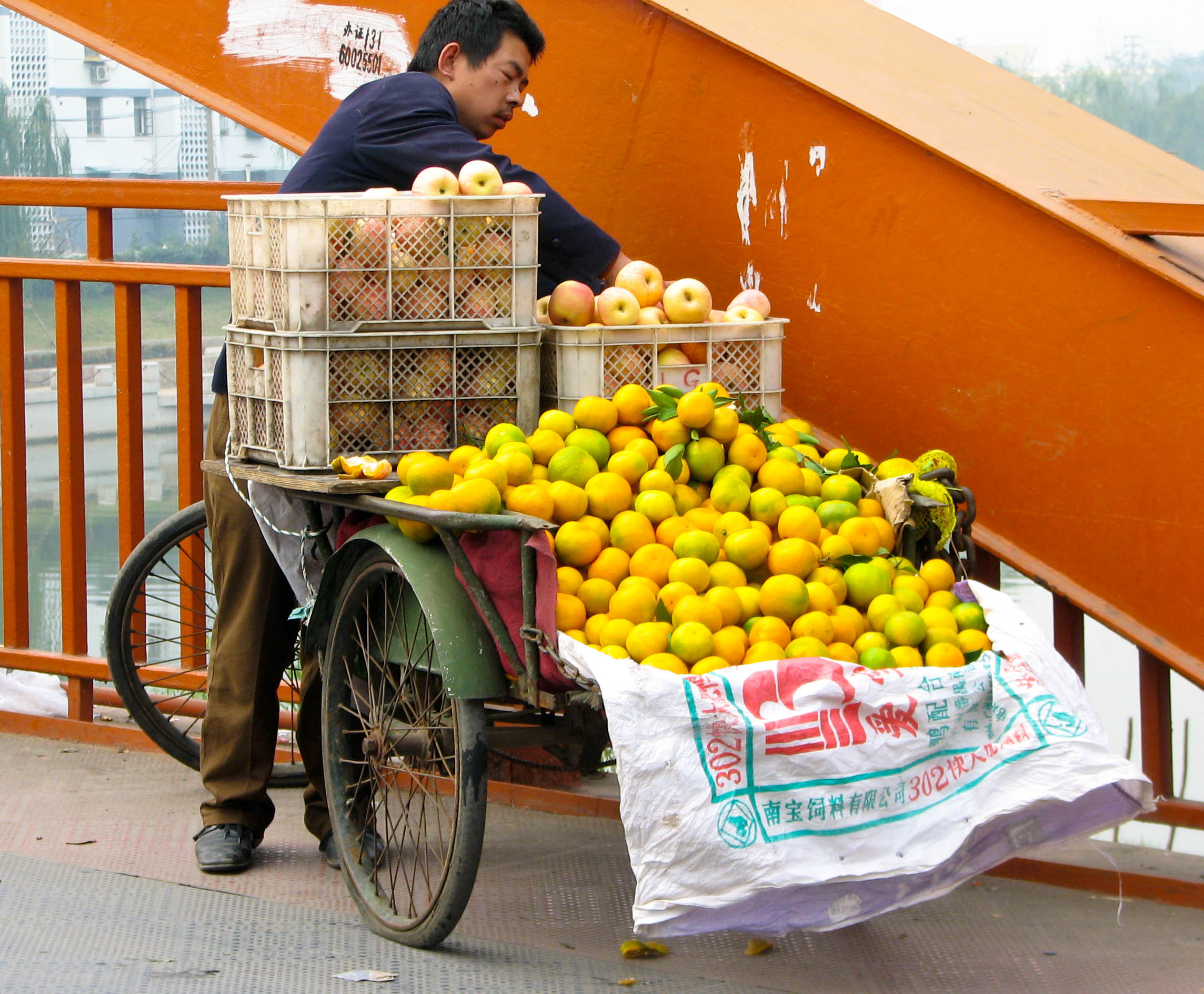
Street vendor with oranges on a bike: A mobile fruit stall, demonstrating the use of bikes for small businesses.
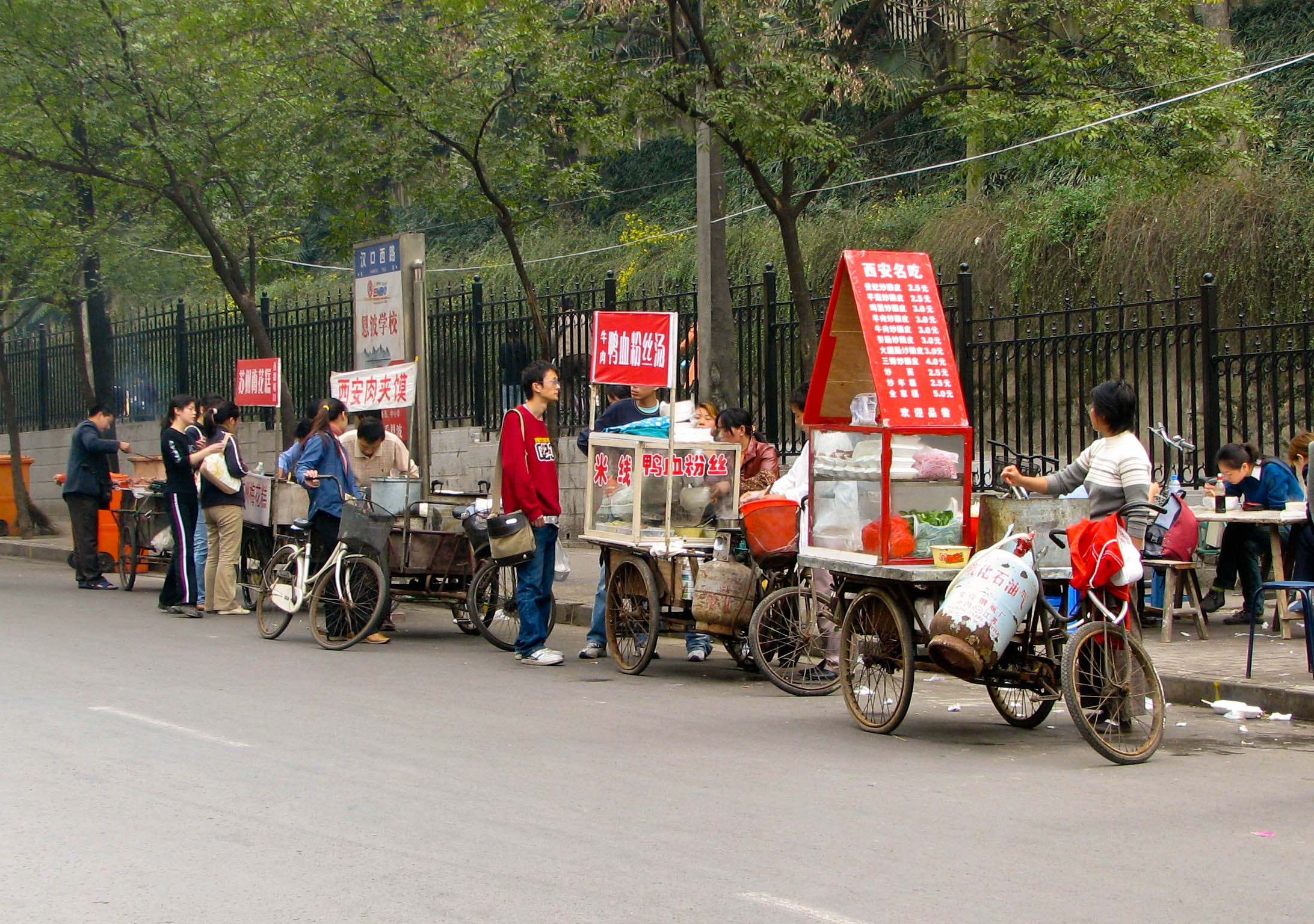
Mobile food stalls on bikes: Street food vendors utilizing bikes as their business platform, showcasing entrepreneurial spirit within the bike culture.
A unique example of regional adaptation within the world of bikes is the 倒骑驴 dǎoqílǘ, a specialized cargo bike prevalent in Northeastern China. Its distinctive design highlights the localized innovations within Chinese cycling culture.
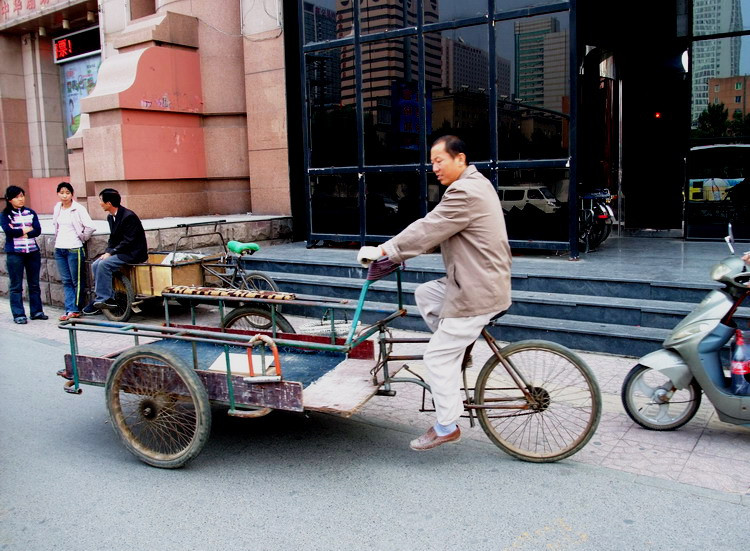
Daoqilu cargo bike in Northeastern China: A specialized bike design adapted for regional transportation needs, photo courtesy of Baidu.
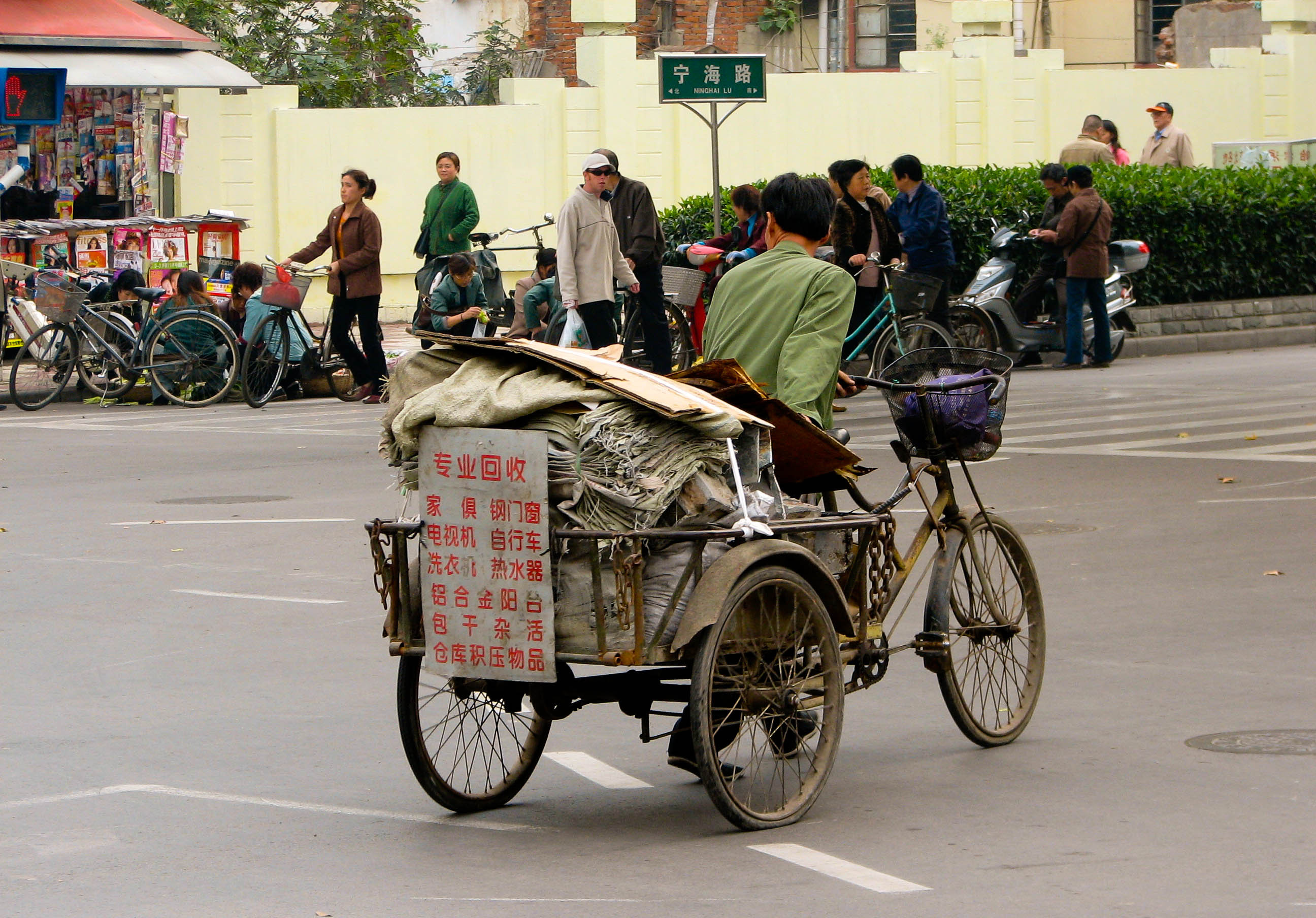
Bike mover in China: An individual advertising moving services using a bike, highlighting the versatility of bikes for various trades.
While I’ve never attempted feats as grand as moving furniture by bike, I did experience the cargo capabilities firsthand when my wife and I needed to furnish our Nanjing apartment. We managed to transport sheets, blankets, pillows, and foam pads for our children, all strapped to a single bicycle. Inspired by the everyday sights of heavily loaded bikes, we navigated through the city crowds with our precarious load, attracting little attention. It was a testament to the normalcy of bikes as cargo carriers in China.
So, on your next visit to China, I highly recommend immersing yourself in the world of bikes. Rent a bicycle and explore. It truly is the most authentic and liberating way to experience a Chinese city, offering a unique perspective into daily life and the enduring importance of the bicycle in Chinese culture.
